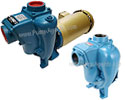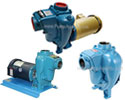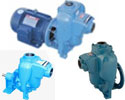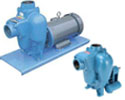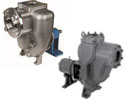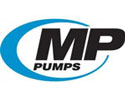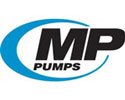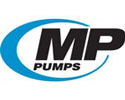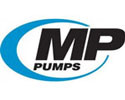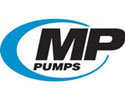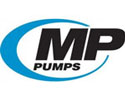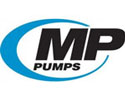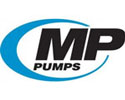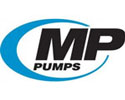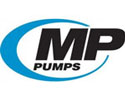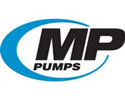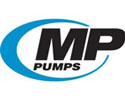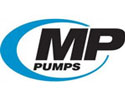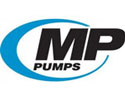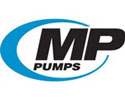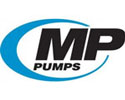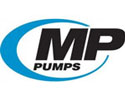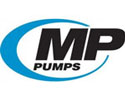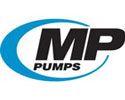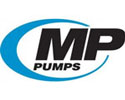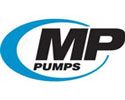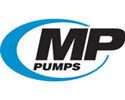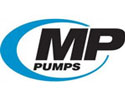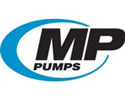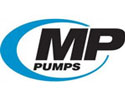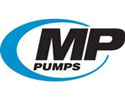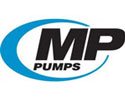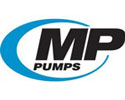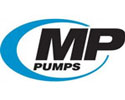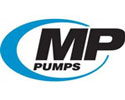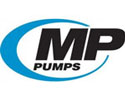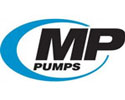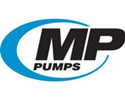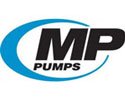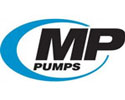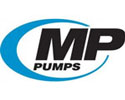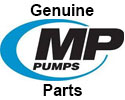MP Pumps
MP Pumps provides centrifugal pumps for a variety of fluid transfer services in the marine, transportation, warewash, agriculture, petroleum, and other industries. MP Pumps was formed in Detroit in 1942, shortly after America's entry into World War II and has been building standard end suction centrifugal pumps and self-priming centrifugal pumps for marine, transportation, industrial and warewash applications since. They serve leading OEMs by designing reliable pumps technologies that last, backed by more than 75 years of engineering and manufacturing expertise.
MP Self Priming Centrifugal Pumps
MP manufactures top of the line self priming centrifugal pumps for various applications. They offer over 20 different types of these self priming pumps to ensure they are providing you with the absolute best product for your industry. Self priming pumps need to evacuate air out of the system in order to stay primed, and ready to run. The centrifugal force of the impeller's rotational energy creates an airtight seal that continuously draws the air toward the discharge port, resulting in the pump's suction.This combination of high velocity and pressure starts the pumping process. Once all the air is expelled from the system, your liquid will start to flow from the discharge port.
Flomax 5 Series Pumps
All Flomax 5 Series Pumps we carry.Flomax 8 Series Pumps
All Flomax 8 Series Pumps we carry.Flomax 10 Series Pumps
All Flomax 10 Series Pumps we carry.Flomax 15 Series Pumps
All Flomax 15 Series Pumps we carry.Flomax 30 Series Pumps
All Flomax 30 Series Pumps we carry.FMX 75 Series Pumps
All FMX 75 Series Pumps we carry.MP End Suction Centrifugal Pumps
In addition to self-priming pumps, MP also provides standard horizontal end suction single stage centrifugal pumps. MP standard end suction centrifugal models are specially designed for hot water, hot oil, chemical and circulating applications. Hot oil pumps are capable of withstanding up to 650 degrees F (343 degrees C) while hot water can be transferred using hot water models up to 400 degrees F (204 degrees C). The chemical transfer full size and fractional CHEMFLO models come in a wide variety of sizes with a selection of drive, coupling and mounting features allowing users to maximize fit and efficiencies. Circulator centrifugal pumps are often found in water, coolant and fuel transfer applications in large and small vehicles such as motor coaches and school buses. Models use open vane style and enclosed style impellers. Centrifugals convert driver energy to kinetic energy in a liquid by accelerating it to the outer rim of a revolving impeller. Since the amount of energy given to the liquid corresponds to the velocity at the impeller vane tip, the faster the impeller revolves (or the bigger the impeller is), the higher the velocity of the liquid at the vane tip and the greater the energy transferred to the liquid. In comparison to positive displacement devices, centrifugals are quieter and require no relief valve to protect the pumps from pressure build-up.
FMX 100 Series Pumps
All FMX 100 Series Pumps we carry.Chemflo 1 Series Pumps
All Chemflo 1 Series Pumps we carry.Chemflo 2 Series Pumps
All Chemflo 2 Series Pumps we carry.Chemflo 3 Series Pumps
All Chemflo 3 Series Pumps we carry.Chemflo 4 Series Pumps
All Chemflo 4 Series Pumps we carry.Chemflo 5 Series Pumps
All Chemflo 5 Series Pumps we carry.Chemflo 6 Series Pumps
All Chemflo 6 Series Pumps we carry.Chemflo 7 Series Pumps
All Chemflo 7 Series Pumps we carry.Chemflo 8 Series Pumps
All Chemflo 8 Series Pumps we carry.Chemflo 9 Series Pumps
All Chemflo 9 Series Pumps we carry.CFX 50 Series Pumps
All CFX 50 Series Pumps we carry.CFX 75 Series Pumps
All CFX 75 Series Pumps we carry.CFX 100 Series Pumps
All CFX 100 Series Pumps we carry.CFX 125 Series Pumps
All CFX 125 Series Pumps we carry.Series 30 Centrifugal Pumps
All Series 30 Centrifugal Pumps we carry.Series 60 Centrifugal Pumps
All Series 60 Centrifugal Pumps we carry.Series 80 Centrifugal Pumps
All Series 80 Centrifugal Pumps we carry.Series 120 Centrifugal Pumps
All Series 120 Centrifugal Pumps we carry.Series 130 Centrifugal Pumps
All Series 130 Centrifugal Pumps we carry.Series 200 Centrifugal Pumps
All Series 200 Centrifugal Pumps we carry.Series 300 Centrifugal Pumps
All Series 300 Centrifugal Pumps we carry.HHLF Series Pumps
All HHLF Series Pumps we carry.HTO 80 Series Pumps
All HTO 80 Series Pumps we carry.HTO 120 Series Pumps
All HTO 120 Series Pumps we carry.HTO 180 Series Pumps
All HTO 180 Series Pumps we carry.HTO 300 Series Pumps
All HTO 300 Series Pumps we carry.HTW 80 Series Pumps
All HTW 80 Series Pumps we carry.HTW 120 Series Pumps
All HTW 120 Series Pumps we carry.HTW 180 Series Pumps
All HTW 180 Series Pumps we carry.HTW 300 Series Pumps
All HTW 300 Series Pumps we carry.2CT Series Pumps
All 2CT Series Pumps we carry.CircPump Series Pumps
All CircPump Series Pumps we carry.ILX Series Pumps
All ILX Series Pumps we carry.MDX Series Pumps
All MDX Series Pumps we carry.SBX Series Pumps
All SBX Series Pumps we carry.MP Pump Parts
All MP Pump Parts we carry.
